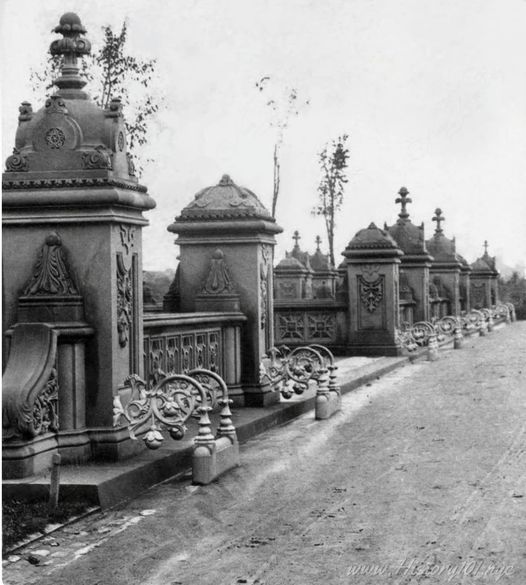In 1865, the construction of Central Park in New York City was well underway, and one of the iconic features taking shape was the stonework on Bethesda Terrace. Here are some details about Bethesda Terrace and its significance:
Architectural Marvel: Bethesda Terrace is a grand architectural structure located at the heart of Central Park. Designed by architect Calvert Vaux, it serves as a monumental gathering place and a focal point for park visitors.
Stonework: The stonework on Bethesda Terrace is renowned for its intricate craftsmanship and attention to detail. Made primarily of New Brunswick sandstone, the terrace features elaborate carvings, balustrades, and decorative elements that showcase the talent of the skilled artisans who worked on it.
Iconic Design Elements: One of the most recognizable features of Bethesda Terrace is its sweeping staircase, which leads down to the lower level of the park. The terrace also includes arched passageways, ornamental columns, and a central fountain, all of which contribute to its grandeur and beauty.
Symbolism: Bethesda Terrace is named after the nearby Bethesda Fountain, which is topped by the famous Angel of the Waters statue. The fountain and terrace are both symbolic representations of healing and renewal, inspired by the biblical story of the Pool of Bethesda.
Historical Context: In the mid-19th century, Central Park was created as a response to the rapid urbanization of New York City. Bethesda Terrace, along with other architectural features and landscaped areas in the park, was designed to provide city dwellers with a respite from the hustle and bustle of urban life.
Legacy: Today, Bethesda Terrace remains one of the most beloved and iconic landmarks in Central Park. It continues to attract visitors from around the world who come to admire its beauty, relax in its tranquil surroundings, and take in sweeping views of the park and its surroundings.
The stonework on Bethesda Terrace stands as a testament to the vision and craftsmanship of the architects, designers, and artisans who contributed to the creation of Central Park, enriching the cultural landscape of New York City for generations to come.

Construction Timeline: The construction of Bethesda Terrace began in 1859 as part of the overall development of Central Park. By 1865, significant progress had been made on the terrace, including the completion of much of the stonework.
Artistic Flourishes: The stonework on Bethesda Terrace features a wealth of artistic flourishes and decorative elements. Intricate carvings, including floral motifs, geometric patterns, and figurative sculptures, adorn the balustrades, columns, and other architectural details.
Skilled Craftsmanship: The execution of the stonework required the expertise of skilled stonemasons and artisans. These craftsmen utilized traditional techniques and tools to carve, shape, and assemble the sandstone blocks that form the terrace’s structure.
Use of Sandstone: The choice of New Brunswick sandstone for the construction of Bethesda Terrace was both practical and aesthetic. Sandstone is a durable and versatile building material that is readily available and relatively easy to work with, making it ideal for large-scale architectural projects like Central Park.
Integration with Landscape: Bethesda Terrace was designed to seamlessly integrate with the surrounding landscape of Central Park. The terrace’s curved design follows the natural contours of the land, creating a harmonious transition between the built environment and the park’s scenic beauty.
Public Reception: The completion of Bethesda Terrace and its stonework in the mid-19th century was met with widespread acclaim from both the public and critics. The terrace quickly became a popular destination for New Yorkers and visitors alike, serving as a cultural and social hub within Central Park.
Overall, the stonework on Bethesda Terrace represents a remarkable achievement in 19th-century architecture and landscape design, showcasing the ingenuity, artistry, and craftsmanship of the individuals involved in creating one of Central Park’s most iconic landmarks.
